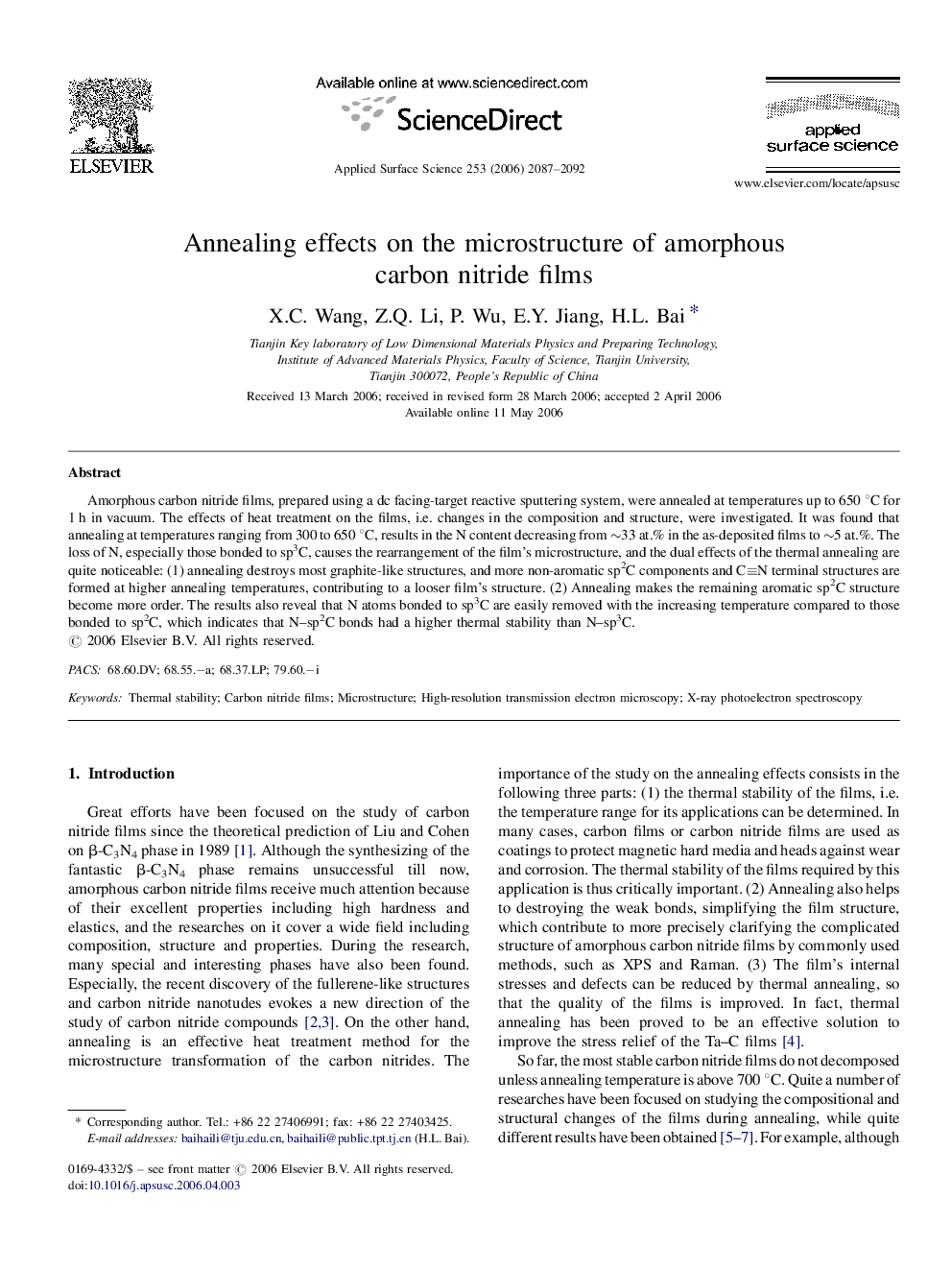| Article ID | Journal | Published Year | Pages | File Type |
|---|---|---|---|---|
| 5370067 | Applied Surface Science | 2006 | 6 Pages |
Abstract
Amorphous carbon nitride films, prepared using a dc facing-target reactive sputtering system, were annealed at temperatures up to 650 °C for 1 h in vacuum. The effects of heat treatment on the films, i.e. changes in the composition and structure, were investigated. It was found that annealing at temperatures ranging from 300 to 650 °C, results in the N content decreasing from â¼33 at.% in the as-deposited films to â¼5 at.%. The loss of N, especially those bonded to sp3C, causes the rearrangement of the film's microstructure, and the dual effects of the thermal annealing are quite noticeable: (1) annealing destroys most graphite-like structures, and more non-aromatic sp2C components and Câ¡N terminal structures are formed at higher annealing temperatures, contributing to a looser film's structure. (2) Annealing makes the remaining aromatic sp2C structure become more order. The results also reveal that N atoms bonded to sp3C are easily removed with the increasing temperature compared to those bonded to sp2C, which indicates that Nsp2C bonds had a higher thermal stability than Nsp3C.
Keywords
Related Topics
Physical Sciences and Engineering
Chemistry
Physical and Theoretical Chemistry
Authors
X.C. Wang, Z.Q. Li, P. Wu, E.Y. Jiang, H.L. Bai,
